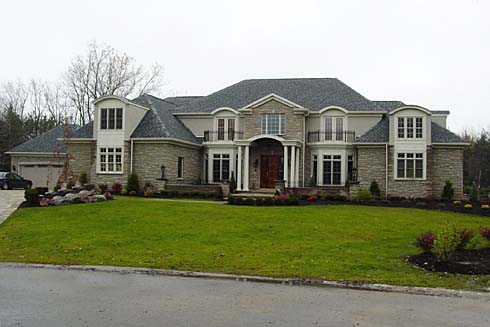GUIDELINE LIVES
In real estate, guideline lives refer to the depreciable lives of buildings and equipment that are used in trade or business.
These lives are used to determine the amount of depreciation that can be claimed each year for tax purposes.
Guideline lives are generally applied to assets bought before 1981. The Accelerated Cost Recovery System (ACRS) applies to depreciable assets bought between 1981 and 1986, while the Modified Accelerated Cost Recovery System (MACRS) applies to purchases made after 1986.
The ACRS was introduced as a way to encourage investment in new equipment and buildings by allowing for faster depreciation of these assets. The MACRS was introduced to simplify the depreciation process and provide more accurate depreciation schedules.
The IRS publishes tables of guideline lives for various types of property, which are used to determine the appropriate depreciation schedule for each asset. The average useful life for straight-line depreciation for buildings and improvements is 15-44 years, while it is 5-15 years for machinery and equipment.
To calculate depreciation using the MACRS, you must first determine the property’s class life, which is based on the asset’s type and use. You can then use the appropriate MACRS depreciation table to determine the depreciation rate for each year of the asset’s recovery period.
In summary, guideline lives are used to determine the amount of depreciation that can be claimed each year for tax purposes. They are generally applied to assets bought before 1981, while the ACRS and MACRS apply to assets bought between 1981 and 1986 and after 1986, respectively. The IRS publishes tables of guideline lives for various types of property, which are used to determine the appropriate depreciation schedule for each asset.
MORE REAL ESTATE TERMS
A, B, C, D, E, F, G, H, I, J, K, L, M, N, O, P, Q, R, S, T, U, V, W, X, Y, Z
Featured New Home

Featured Mortgage Brokers
- Harvard Mortgage, mortgage broker in Albuquerque, NM
9551 Paseo del Norte NE
Albuquerque, NM 87122 - COBALT MORTGAGE, EVERETT, WA
2825 COLBY AVE STE 305
EVERETT, WA 98201 - WELLS FARGO BANK NA, DES MOINES, IA
1 HOME CAMPUS # 4801-196
DES MOINES, IA 50328 - ALCOVA MORTGAGE LLC, ROANOKE, VA
305 MARKET ST SE STE 204
ROANOKE, VA 24011 - AMERICAN NATIONWIDE MORTGAGE COMPANY INC, LITTLE RIVER, SC
2220 HIGHWAY 17
LITTLE RIVER, SC 29566